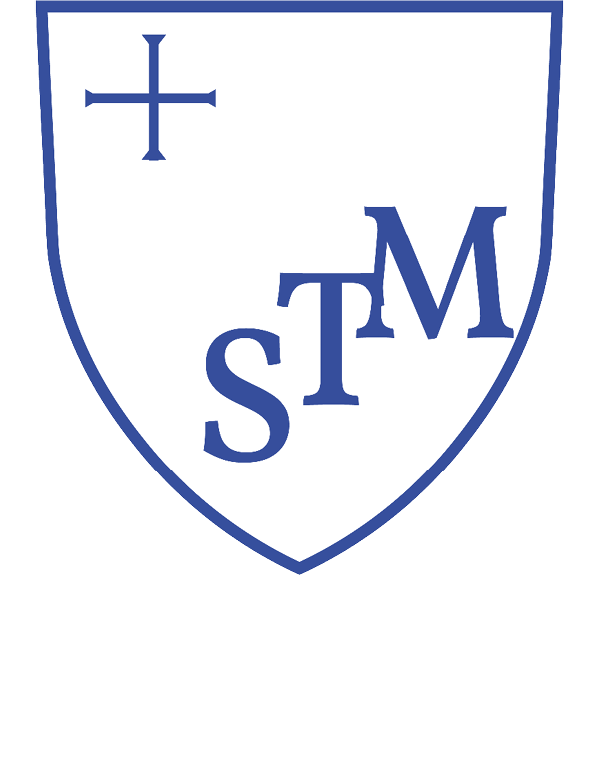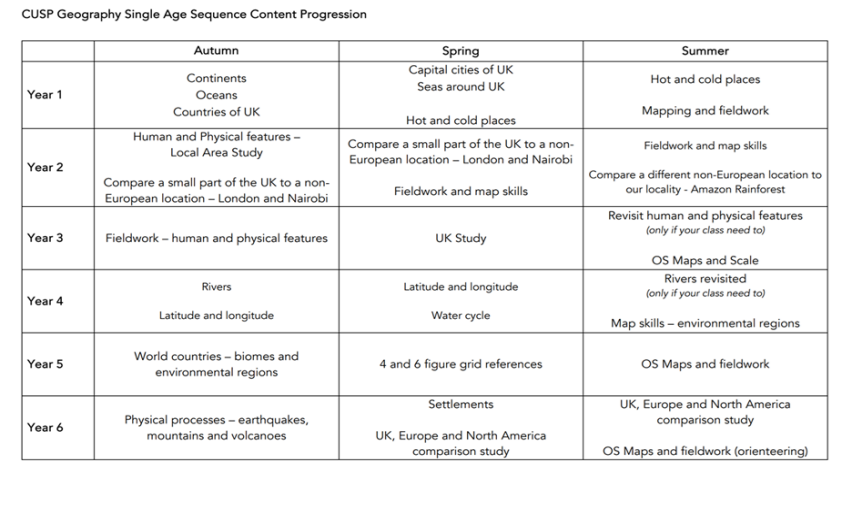Geography
At our school, Geography inspires curiosity and deepens understanding of the world around us.
We follow the CUSP Geography curriculum, which is rooted in evidence-based practice and designed to build pupils’ geographical knowledge over time. Through carefully sequenced units, children explore physical and human geography, locational knowledge, and environmental issues. They learn to ask questions, interpret maps, and understand global connections. CUSP Geography promotes rich vocabulary and oracy, enabling pupils to articulate their thinking clearly. Our aim is to develop informed, responsible global citizens who can think critically about place, space, and the impact of human activity on the planet.
At St Martin's, Geography is more than a subject—it’s a gateway to exploring our planet, understanding environments, and appreciating global diversity.
Big Ideas
CUSP Geography is built around powerful, recurring concepts that help pupils make sense of the world. These include place, space, scale, interdependence, physical and human processes, and sustainability.
Each unit explores these ideas through enquiry questions that encourage curiosity and critical thinking. Pupils learn to connect geographical knowledge with real-world issues, such as climate change, migration, and resource distribution.
These big ideas are revisited and deepened over time, helping children build a coherent understanding of geography. The curriculum promotes global awareness, environmental responsibility, and the ability to interpret and analyse the world through a geographical lens.
Content
The CUSP Geography curriculum covers a broad and ambitious range of topics across Key Stages 1 and 2.
Pupils study locational knowledge, physical and human geography, environmental issues, and geographical skills such as map reading and fieldwork. Units include learning about continents, oceans, weather patterns, settlements, land use, and global trade. Pupils explore both local and global contexts, developing an understanding of how geography affects people and places.
The curriculum also includes opportunities to study significant geographical features and events, such as rivers, mountains, and natural disasters. This rich content ensures pupils gain a well-rounded and meaningful understanding of geography.
Sequencing
CUSP Geography is carefully sequenced to build knowledge and skills over time.
Each unit connects to prior learning, allowing pupils to revisit and deepen key concepts.
The curriculum begins with foundational knowledge in Key Stage 1, such as understanding maps and local geography, and progresses to more complex ideas in Key Stage 2, including global interdependence and environmental change.
Lessons are structured to reduce cognitive load, with new content introduced in manageable steps and supported by retrieval practice. This cumulative approach ensures pupils retain and apply geographical knowledge confidently, developing a secure understanding of the world around them.
Oracy and Vocabulary
Oracy and vocabulary are central to CUSP Geography.
Each unit introduces and revisits Tier 2 and Tier 3 vocabulary, helping pupils articulate geographical ideas with clarity and precision. Pupils engage in structured talk, discussions, and presentations to explore concepts and share their thinking. Teachers model academic language and encourage pupils to use it in context, supporting both spoken and written communication.
Vocabulary is explicitly taught and embedded through repetition and application.
Oracy activities such as questioning, reasoning, and storytelling help pupils develop confidence in speaking and listening, while deepening their understanding of geographical content and concepts.
Assessment of Pupils
Assessment in CUSP Geography is designed to support learning and track progress.
Teachers use formative strategies such as questioning, retrieval practice, and low-stakes quizzes to assess understanding throughout each unit. Pupils complete tasks that demonstrate their ability to recall knowledge, apply vocabulary, and think geographically. Summative assessments include written responses, map work, and structured tasks linked to enquiry questions.
Knowledge organisers and pupil book studies help monitor retention and identify gaps.
Assessment informs teaching, provides feedback, and supports planning for future learning. This ensures all pupils make sustained progress and develop a secure grasp of geographical knowledge and skills.
Reasonable Adjustments for Pupils with SEND
CUSP Geography is designed to be inclusive and accessible for all learners, including pupils with SEND.
Lessons follow consistent routines and use visual aids, dual-coded resources, and scaffolded tasks to support understanding. Vocabulary is explicitly taught and revisited, helping pupils access complex ideas.
Teachers make reasonable adjustments such as simplified texts, additional modelling, and adapted questioning. Retrieval practice and repetition help reinforce learning.
Opportunities for oral responses and collaborative work support pupils with communication needs.
Assessment is used to identify barriers and tailor support. This ensures all children can engage meaningfully with geography and make progress at their own level.

